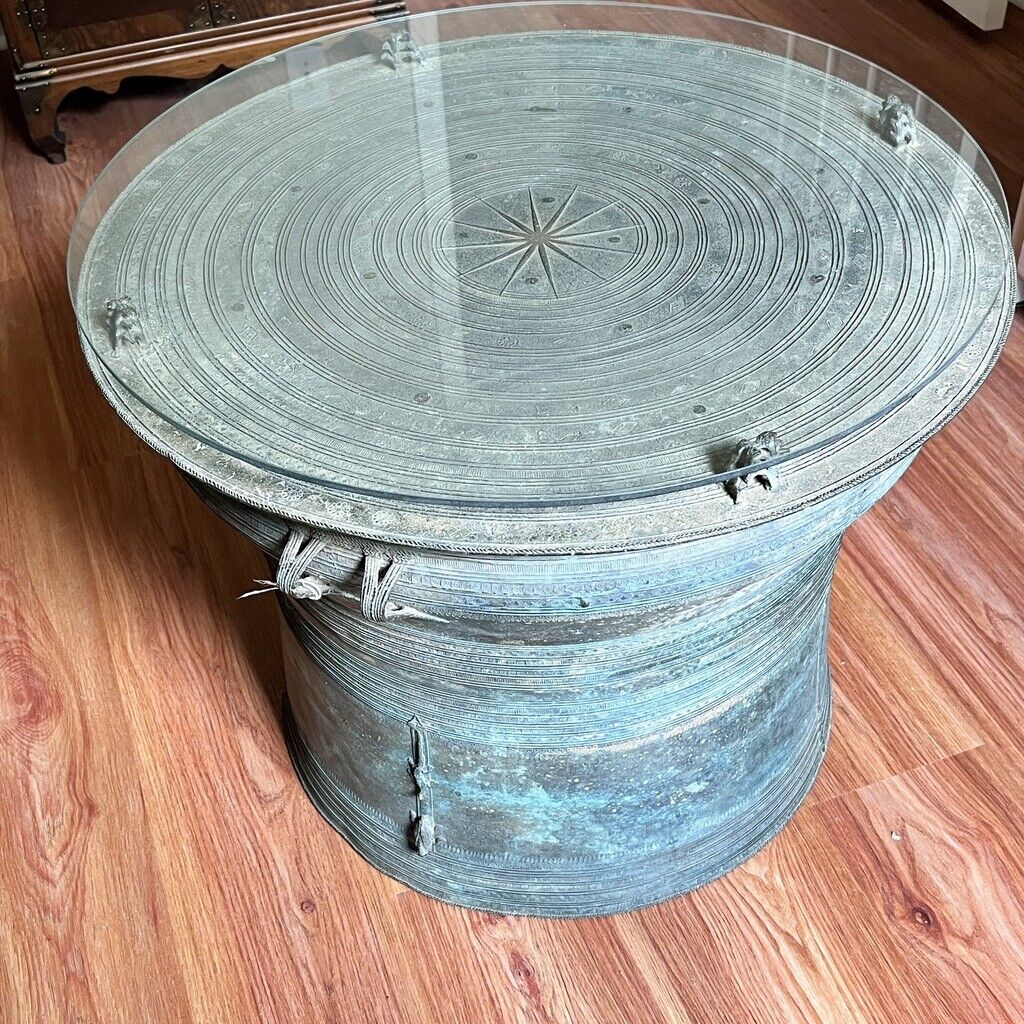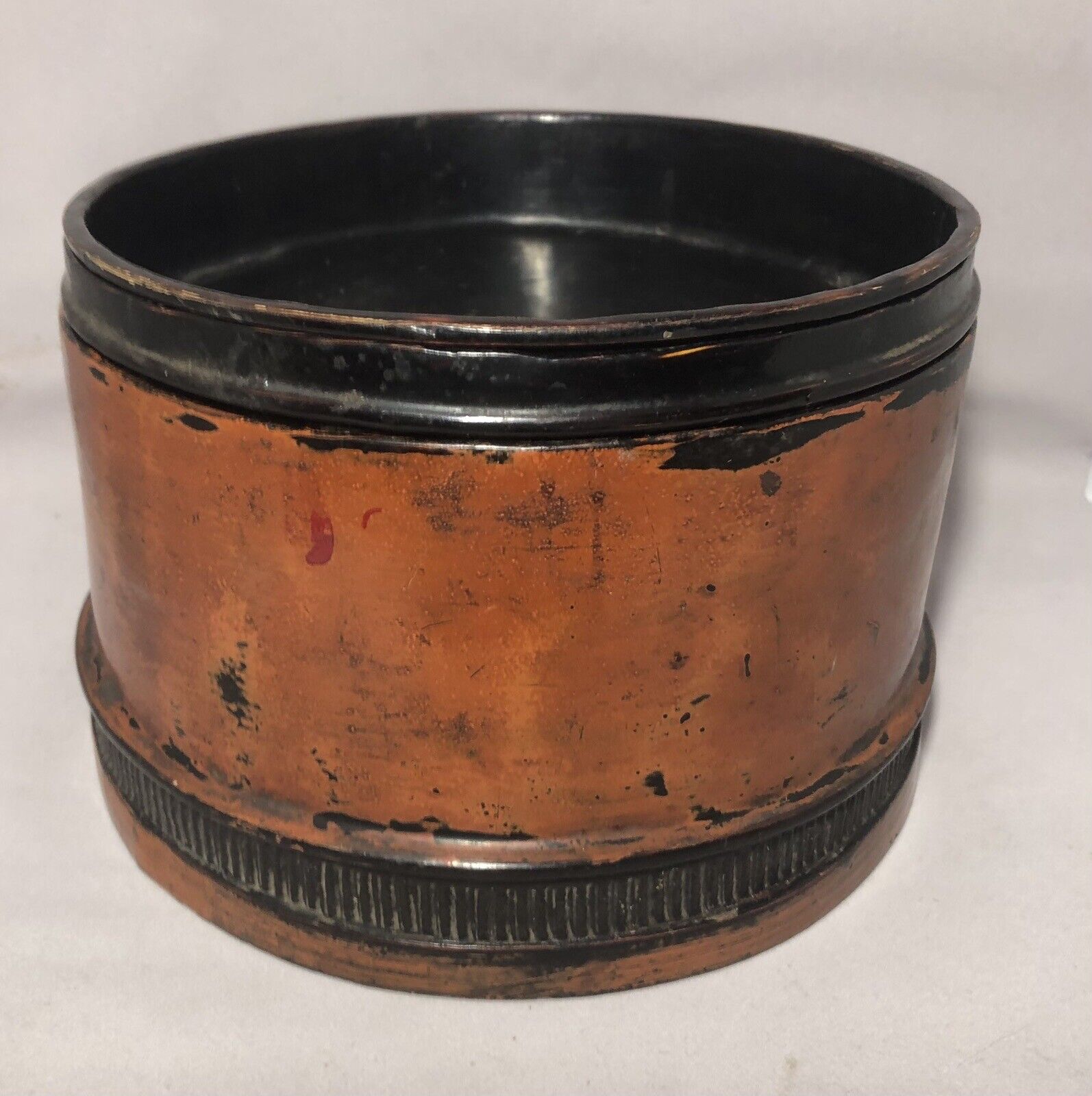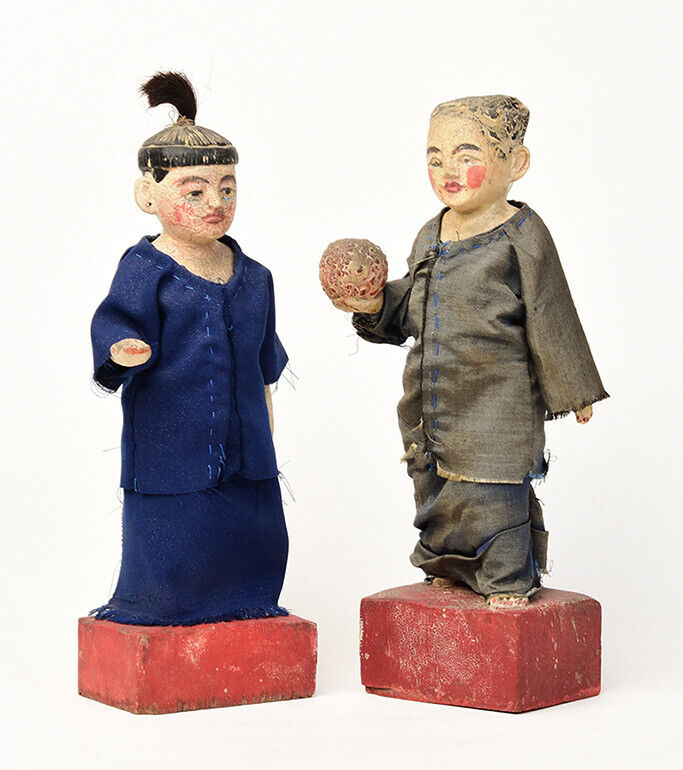-40%
Antique Burmese Karen Frog Rain Drum
$ 1900.8
- Description
- Size Guide
Description
Beautiful Antique Bronze Burmese Ceremonial Rain Drum with Great Patina & Detail with Removable Glass Top19” x 26”
Karen Burmese Frog Rain Drum
This bronze drum was bought in Singapore in the early 1990s at an antique shop along with several other vintage pieces.
The drum is cylindrical and waisted and has clear markers to origins in Eastern Burma with the Karen people, but it is part of a wider tradition of bronze drum making in Southeast Asia and South China, a tradition that goes back many centuries. Such drums seem to have been traded from the earliest times, judging by their distribution today and sometimes were offered as tribute to overlords (Fraser-Lu, 1994, p. 140).
This example, with two pairs of handles around the sides, has a round, flattened top with four cast effigies of frogs placed at equidistant points around the tympanum which is decorated with a central star or sun burst motif around which there are numerous concentric bands filled with repeated duck, fish, aquatic flower and stylised seed motifs.
The Karen regarded such drums as their most precious possessions. The deep tone of the drums was believed to be pleasing to ancestral spirits and to the
nat spirits. Possibly, the drums were also beaten in conjunction with rice planting festivals to encourage the rains – sometimes they are referred to as rain drums. This association with rain no doubt accounts for the use of the frog, duck and fish motifs for example. It is also possible that seed rice was stored in the drums prior to sowing.
The Karen do not appear to have cast such drums themselves but commissioned them form Shan craftsmen who cast the drums using the lost-wax process. According to Fraser-Lu, the Shan artisans had to undergo various purification rites at an auspicious hour determined by an astrologer prior to commencing casting on account of the ritual importance of such drums. The drums made by the Shan also were exported to buyers in Thailand, Laos and Cambodia.
Drums similar to this example are illustrated in Fraser-Lu (1994), Lewis (1984) and Pal (2004). The Norton Simon Museum in California has a collection of fourteen such drums including several that appear to be of Shan/Karen origins. A very similar example was presented to the United States as part of the Harris Treaty gifts in 1856. This example is illustrated in McQuail, 1997, p. 125.
The condition of this example is very fine. It has an extraordinary grey-green surface patina. Overall, it is a fine example of a Southeast Asian frog drum. It was acquired in Singapore.
A rare and unique piece.















